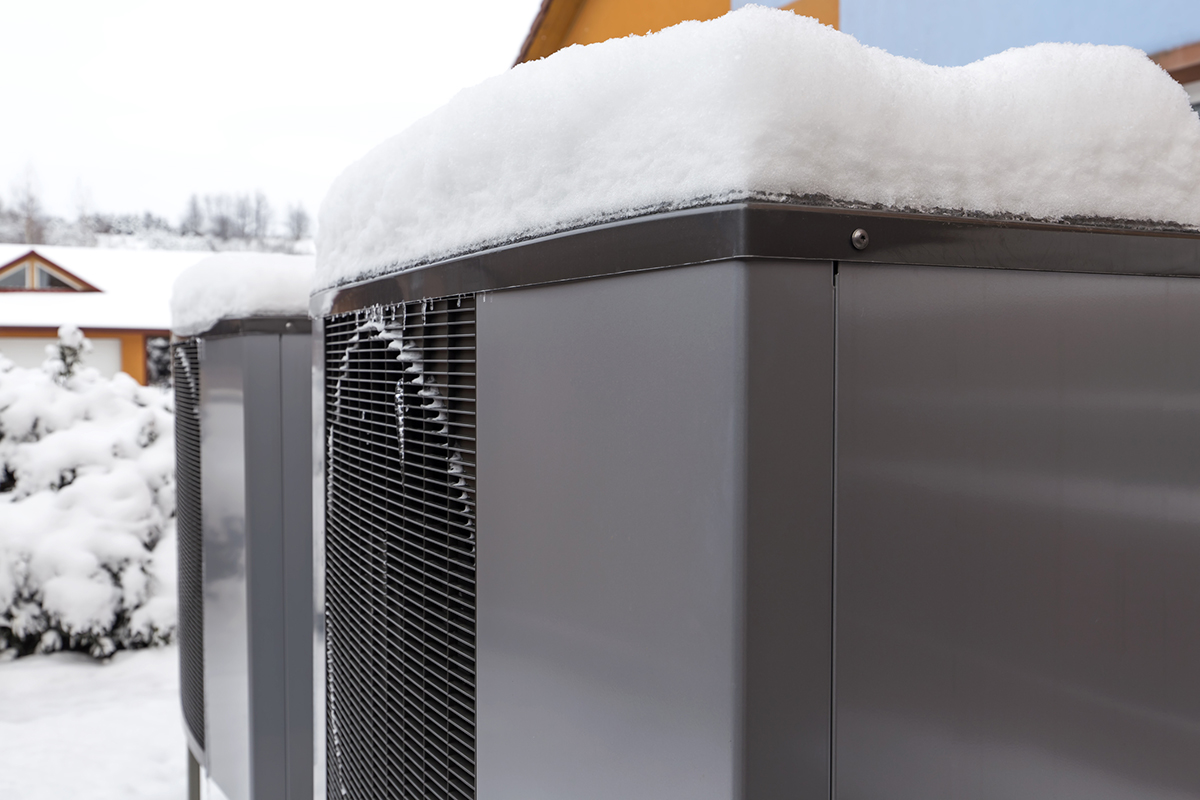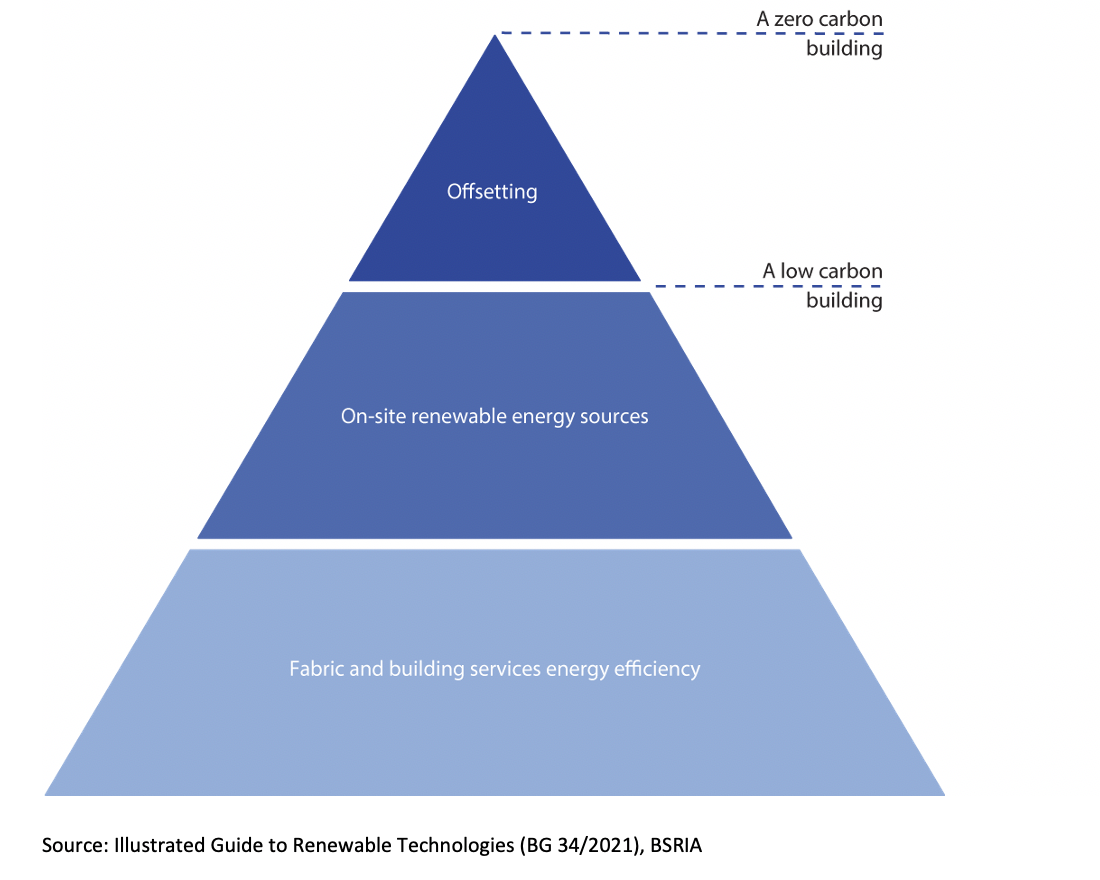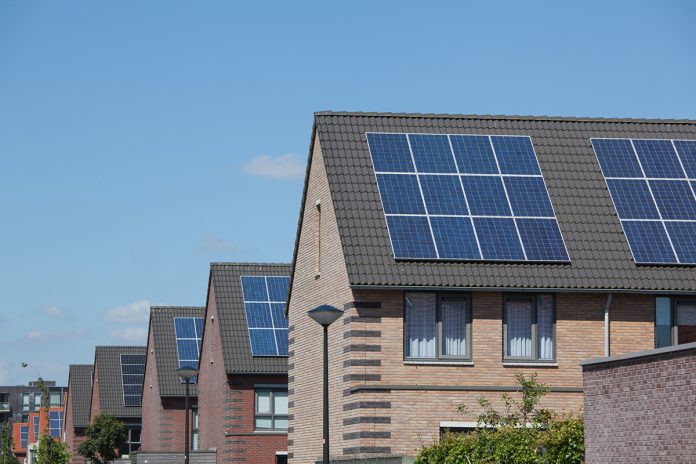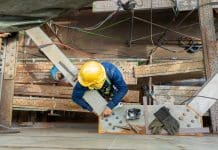“Turn tragedy into triumph and tackle climate change.”
World leaders met in Glasgow in November to discuss urgently needed actions to limit global temperature rises. COP 26, as the United Nations Climate Change Conference of Parties is known, was seen as a vital opportunity to “turn tragedy into triumph” and tackle climate change, as David Attenborough pointed out in his speech at the opening day of the event.
Our precarious situation calls for actions that are global and wide-ranging, including reforestation, viable carbon removal and capture and storage (CCS) technologies, and phasing out the use of coal.
This article focuses on just one piece of the puzzle – the use of on-site renewables in buildings. It’s the subject of an updated BSRIA guide published in December 2021 – The Illustrated Guide to Renewable Technologies (BG 34/2021).
The guide is aimed at construction professionals who don’t need to be experts on the topic but need to communicate with those who are. It provides basic explanations and reference information on the key technologies for on-site renewables, two of which are outlined below. The guide also mentions allied technologies such as energy storage, lesser-used technologies such as building-mounted wind turbines and grid-scale renewables.
Heat pumps
Heat pumps have been in the news over the last few months, with the UK government announcing grants of £5,000 to replace gas boilers with heat pumps in homes in England and Wales. Furthermore, it is expected that new housing developments won’t be able to connect to the gas grid from 2025.
Heat pumps use a refrigeration process to absorb heat energy from the ground or air outside a building and release this energy, at a higher temperature, directly into the air inside the building or into its heating or hot water system. Heat pumps run on electricity but are much more efficient than direct electric (electric resistance) heating. For example, to achieve the same heat output, a heat pump with a coefficient of performance (CoP) of 4 will use a quarter of the electricity of a direct electric heater.
As the UK’s electricity grid has significantly decarbonised in recent years, the CO2 emissions associated with using heat pumps are now much lower than for an equivalent gas-fired system. However, this is contingent on the heat pump system being correctly designed, installed, commissioned, operated and maintained.

Photovoltaics
Photovoltaics (PVs), which convert sunlight into electricity, can be used at grid scale in solar farms as well as on site, on roofs or façades of buildings. The cost of PV panels is gradually coming down and their conversion efficiency increasing, making them cost-effective for new buildings and some retrofit applications. Most systems are grid-connected, meaning the DC electricity produced by the PV panels is converted to AC using an inverter and fed into the building’s electrical distribution system. It can also be exported when the power generated by the panels exceeds that used in the building.
Reducing CO2 from buildings
Renewable technologies have an important part to play in reducing CO2 emissions from buildings. This will become ever more so as the drive to more energy efficient buildings (and towards zero carbon buildings) continues. A consultation that took place in 2021 on changes to Part L of the England Building Regulations proposed reductions in CO2 targets for new buildings, as well as a new primary energy metric. Renewables will assist with achieving both of these targets.
Further reductions have been proposed as part of the Future Homes Standard and Future Buildings Standard, to be implemented from 2025. It is likely that on-site renewable energy technologies will be necessary for buildings to comply with these 2025 standards.
However, they should not be seen as the default solution. Design solutions must focus firstly on energy efficiency, with renewable technologies only considered once all reasonable energy efficiency measures have been implemented. If the aim is a zero-carbon building, it may not be possible to achieve this purely through energy efficiency and on-site renewables. In this case, carbon offsetting may be considered. This hierarchy is illustrated above.

BSRIA’s Illustrated Guide to Renewable Technologies is available now from the BSRIA Bookshop, with free downloads for BSRIA members.
*Please note: This is a commercial profile.
David Bleicher
Publications Manager
The Building Research & Information Association (BSRIA)
Twitter: @bsrialtd
LinkedIn: BSRIA

















